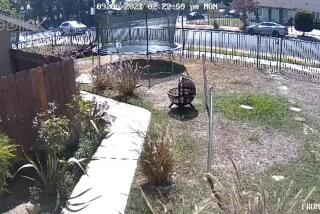Damage Control for Car Accidents
- Share via
Car accidents. They can and do happen to anybody and everybody. One “happened” to me earlier this week.
Of course, many people, when they get in a noninjury fender-bender, don’t have my kind of luck. I was on the Hollywood Freeway and slammed into the rear of a shiny new BMW. The driver was an undercover police officer.
On the other hand, if you have to run into somebody, at least a cop knows about traffic reports and things like that.
Lawyers and insurance adjusters always advise that the first thing you should do--after you’ve stopped the car and made sure you can walk--is to get the names and addresses of the drivers and witnesses, and the relevant insurance information.
That’s fine in theory, but with angry drivers on the freeway yelling at us to get out of the way, the first thing we did was move the cars to the side of the freeway.
And all my expensive legal training didn’t really help much: I was still in shock. I let the driver behind me leave without getting her name or address, and didn’t seek out other witnesses. Fortunately, no one was seriously injured.
What should you do if you find yourself in similar unhappy circumstances, aside from just exchanging driver’s license numbers and insurance policies? The best source for legal information on this subject is the four-volume state Vehicle Code, but that doesn’t fit in your glove compartment.
Some insurance companies include guidelines about what to do and what to say on the forms showing you have insurance that you must have in your car. Reach out and read them before you get yourself into trouble.
Another source of information is the State Bar of California, which summarizes the rules of the road in a free pamphlet called, “What Should I Do If I Have an Auto Accident?” And it will fit in your glove compartment.
(Unfortunately, the pamphlet is out of print right now; however, the state bar is revising it and it will be available again in a few months. It’s available in English, Spanish and Chinese.)
The pamphlet explains that you are required by law to stop whenever you are involved in an accident, whether you hit a pedestrian, another car or a brick wall. If you hit an unattended car, you are required to leave a note on the car’s windshield.
If the accident involves damage of more than $500 or if someone is injured or killed, you must file a written report. You can get the form from the DMV.
In my case, even though there were no injuries, we had to wait for the Highway Patrol to complete a report since the other driver was an on-duty police officer.
Don’t talk much about the accident at the scene. You may say something you regret later--something that is quoted back to you in cross-examination during a personal injury lawsuit. You should be courteous, but you need not be apologetic.
As soon as possible, contact your insurance agent and have him or her handle the negotiations with the other driver and his insurance company.






